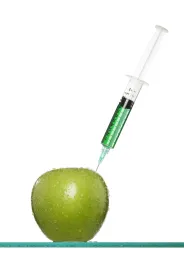On September 2, 2022, the U.S. Department of Agriculture (USDA) Agricultural Marketing Service (AMS) published an advance notice of proposed rulemaking (ANPR) seeking input from stakeholders about how to update its organic regulations on inert ingredients in pesticides used in organic production. 87 Fed. Reg. 54173. AMS seeks comments on alternatives to its existing regulations that would align with the Organic Foods Production Act of 1990 (OFPA) and the U.S. Environmental Protection Agency’s (EPA) regulatory framework for inert ingredients. According to the ANPR, information from public comments would inform AMS’s approach to this topic, including any proposed revisions of the USDA organic regulations. Comments are due November 1, 2022.
According to AMS, the ANPR seeks input from stakeholders about how to rectify the USDA organic regulations’ references to outdated EPA policy on inert ingredients used in pesticide products. AMS states that the outdated references are inconsistent with current EPA requirements and that this causes problems in the organic industry and for AMS’s administration of the USDA organic regulations.
AMS notes that inert ingredients, also identified as “other ingredients” on pesticide labels, are substances other than the “active” (i.e., pesticidal) ingredients included in formulated pesticide products. Inert ingredients may function as adjuvants, solvents, diluents, stabilizers, or preservatives. AMS states that pesticide labels do not typically disclose the identity (common or chemical name) of the inert ingredients in the product.
For organic crop and livestock production, current USDA organic regulations allow EPA List 3 and List 4 inert ingredients to be used in pesticide products when the product includes active ingredients permitted by the organic regulations. According to AMS, together, EPA List 3 and List 4 include more than 2,700 inert ingredients. AMS states that it does not know how many of these inert ingredients are included in products used in organic production, “but it is likely a relatively small subset of these 2,700 ingredients.” Because the Food Quality Protection Act of 1996 (FQPA) mandated that EPA develop tolerances (or tolerance exemptions) for inert ingredients used in food-contact products, new and existing inert ingredients are approved for use through EPA’s rulemaking process. As a result, EPA no longer updates the EPA lists referenced in the USDA organic regulations.
Commentary
AMS’s National Organic Program (NOP) seeks comments that will assist in assessing the feasibility of alternatives that could replace the references to the outdated EPA lists. Information submitted in response to the ANPR will inform AMS’s approach to this topic, including any proposed revisions of the USDA organic regulations. AMS seeks comments to identify alternatives, as well as to receive information about obstacles and the costs and benefits of options. According to AMS, stakeholders that may be affected by future actions on this topic include pesticide manufacturers, certified organic operations, consumers, certifying agents, and other interested parties.



 />i
/>i
